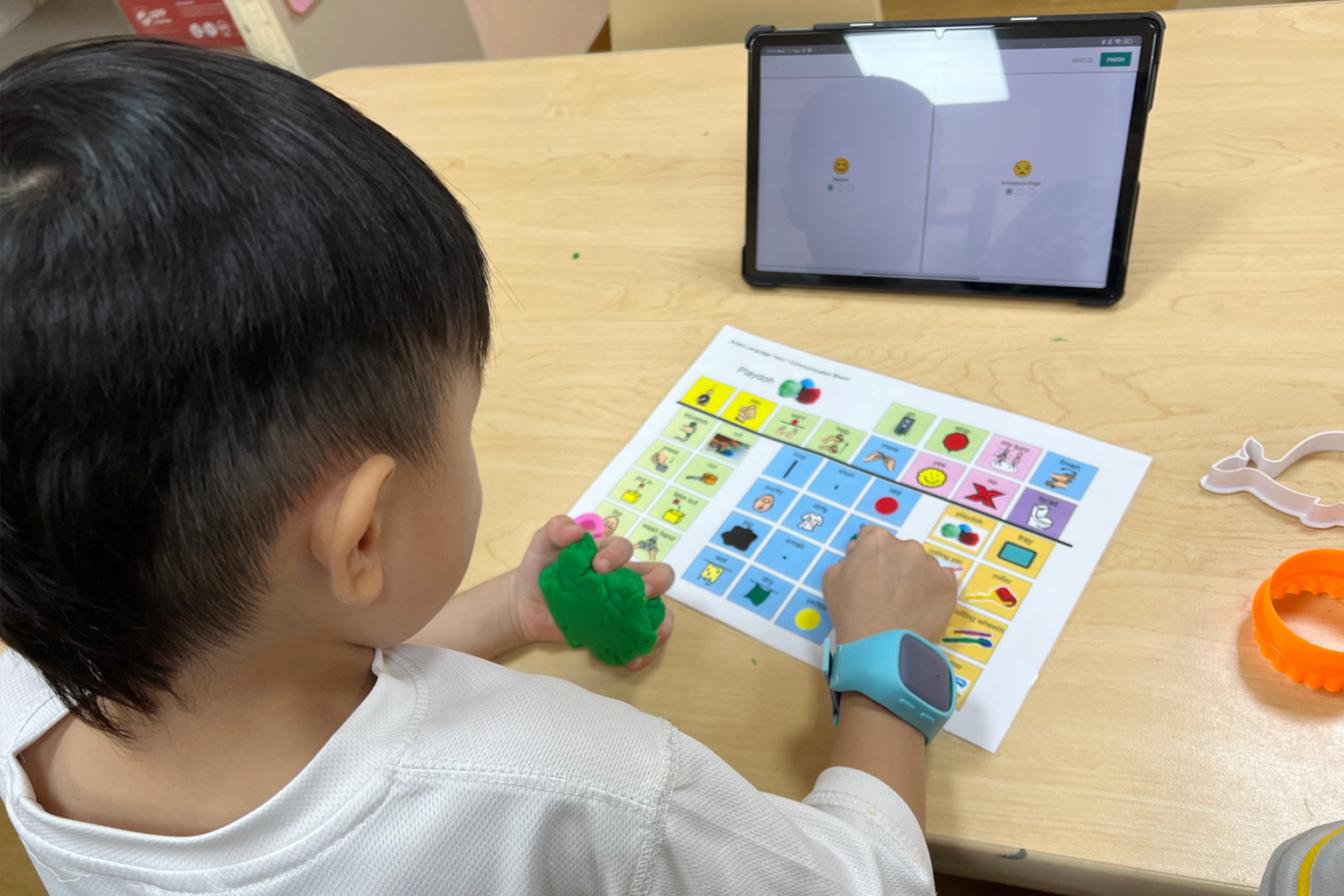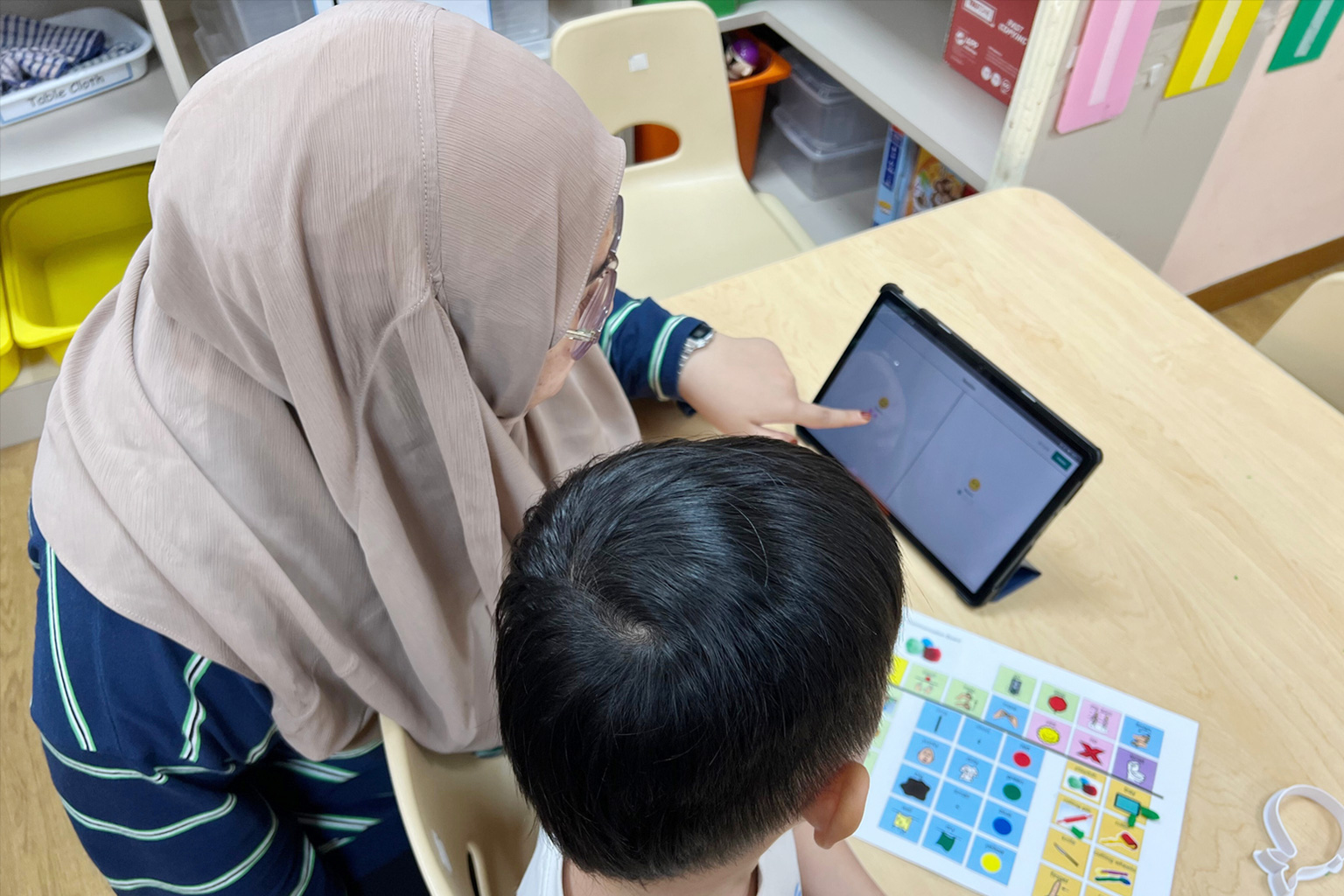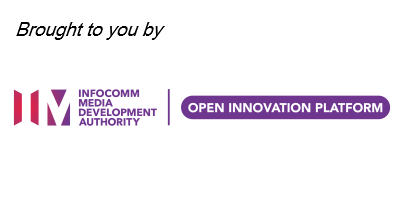BRANDED CONTENT
Detecting meltdowns before they happen: How AI device helps children with autism manage their feelings
In collaboration with the IMDA Open Innovation Platform, students at Thye Hua Kwan Moral Charities wear a small device that detects early signs of emotional distress, enabling teachers to provide timely support

The Pelios (pictured) is a smart wearable device that uses artificial intelligence to track a child’s heartbeat, pulse rate and movement to alert caregivers on early signs of distress or overstimulation. PHOTO: THYE HUA KWAN MORAL CHARITIES
Follow topic:
Imagine if you can detect the early signs of meltdowns in children before they happen, especially for children on the autism spectrum.
In a school setting, children with developmental needs experiencing a full-blown meltdown can cause emotional and physical distress to themselves and the people around them, such as classmates and teachers. Early detection will allow teachers of children with developmental needs to intervene quickly in order to prevent the meltdown.
"By reducing the number of meltdowns in class, time can be spent more effectively on engaging the children and developing their functional skills," says Mr Edmon Lim Chuen Leang, assistant head of department (Teaching), Thye Hua Kwan Moral Charities (THKMC).
THKMC’s Early Intervention Programme for Infants and Children (EIPIC) centres address the diverse learning needs of children below the age of seven. THKMC operates six EIPIC centres, and currently serves about 700 children with developmental needs such as autism, global developmental delay, and speech and language delay.
The organisation has been trialling the Pelios, a smart wearable device designed specifically for this purpose by Hong Kong-based tech company Bridge AI.
The device monitors physiological cues like a spike in heartbeat intervals, skin conductance under stress (when the skin becomes moist due to perspiration), a higher pulse rate, and an increase in arm movement.
Its artificial intelligence (AI) engine then immediately alerts teachers and caregivers once it recognises early signs of distress or overstimulation – sending notifications to their phones and allowing real-time monitoring of any emotional changes through the app.
“When a child is distressed, teachers may give the child a break and space to regulate their emotions by bringing the child to a calm down corner. Other strategies used include doing deep breathing exercises with the child and providing deep pressure massages to the child's body by giving firm squeezes to the child's limbs,” says Mr Shaun Ng Wei Han, a senior research assistant at THKMC.
Using AI algorithms and real-time data to support emotional regulation
Recognising the need for a more tailored solution to support children on the autism spectrum, THKMC turned to the Infocomm Media Development Authority's (IMDA) Open Innovation Platform (OIP) in September 2022.
The National Council of Social Service (NCSS) participated as the industry sector lead for social service agencies, ensuring that once the solution is fully developed, it can be rolled out to other early intervention centres.
With support from IMDA and the NCSS, THKMC evaluated six proposals and picked edtech company Bridge AI to start working on a prototype.
With support from IMDA and the NCSS, THKMC evaluated six proposals and picked edtech company Bridge AI to start working on a prototype.

“We picked Bridge AI due to its experience in the education-technology sector, especially back in their home in Hong Kong, which has proven valuable in adapting their solution for our context and purpose,” says Mr Lim.
To customise a solution for THKMC, the tech company spent a year to understand and explore the most effective ways to align and enhance their current system to meet the agency's needs.
It also conducted multiple rounds of data collection from students of THKMC, and compared them to their existing pool from Hong Kong. The data collected from THKMC were also used to train the AI engine for a more accurate detection and prediction of meltdowns, says Mr Victor Wong, chief executive officer, Bridge AI.
A unique challenge they had to overcome was getting the students to wear the device, which was designed to be colourful, comfortable, lightweight and water-resistant to appeal to them.
"Right from the start, we needed to desensitise the children in wearing the device. This also contributes to their development in terms of getting used to different textile sensations," says Mr Lim.
Staff at THKMC have noticed the device’s usefulness. “The notifications from the Bridge AI app have been helpful in alerting us in the classroom when a child is distressed and needs a break from an activity,” says Ms Nurul Maslinda Binti A Rahim, an assistant teacher.
As it stands, the accuracy rate of the solution to detect initial stages of a meltdown is about 70 to 80 per cent, according to Bridge AI. THKMC is confident that the accuracy rate will increase as more data from its EIPIC centres are fed into the new system.
The first part of the trial was completed in May this year when a prototype was introduced at the THKMC EIPIC centres for a month. “Based on feedback from our teachers after that, Bridge AI has refined the solution," says Mr Ng.
Bridging gaps: How IMDA's OIP call fostered a meaningful solution
The Infocomm Media Development Authority's (IMDA) Open Innovation Platform (OIP) is a virtual crowd-sourcing platform that connects organisations facing challenges with innovative solution providers globally.
In September 2022, IMDA together with the National Council of Social Service (NCSS) collaborated closely with Thye Hua Kwan Moral Charities (THKMC) to craft a clear challenge statement while giving them access to the collective expertise of over 13,000 tech solvers worldwide.
According to THKMC, the IMDA team supported them throughout the process – from refining the challenge statement and evaluating proposals to eventually selecting the most promising solution. Bridge AI, the winner of the challenge, was awarded funding to bring their solution to life.
“It was a great opportunity for us to try out a different technological innovation,” says Ms Low Hwee San, chief of THK Early Intervention for Children (EIC) Services.
Together, IMDA, THKMC and NCSS are paving the way for impactful solutions that support the needs of neurodivergent children across Singapore.
Finding the right partner through OIP

For THKMC and Bridge AI, using IMDA OIP was a positive experience that has helped them meet their goals.
Bridge AI says it will continue to participate in OIP challenges after seeing how working with THKMC has opened up another level of possibility for its solutions.
“When we first considered joining the OIP challenge, our goal was to connect with potential partners who share our vision of serving more SEN children and to collaborate on enhancing and developing our AI system,” says Mr Wong.
“Our collaboration with THKMC gave us a new perspective on how to apply our system,” he adds.
For THKMC, the experience has been “exciting and fascinating”.
“We were exposed to various types of technological solutions we were unaware of, which also allowed us to consider possibilities in other areas,” says Mr Ng.
“Bridge AI has been supportive throughout this project trial. Even though they are based in Hong Kong, they came to Singapore to oversee the trial and assist with the initial implementation.”
The prototype was completed in September of this year and THKMC can already see the solution helping children and families beyond its centres.
“It has potential to eventually be used in the home context by parents,” says Mr Ng.
“Over time, caregivers can use the device to help children with needs learn to recognise their own emotions, and develop emotion regulation strategies they can carry into adolescence and adulthood.”
Learn more about the IMDA Open Innovation Platform (OIP) programme on their website and join the mailing list to stay updated on upcoming OIP challenge calls.


